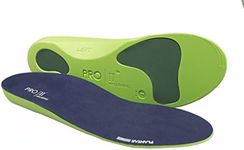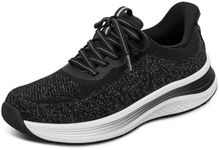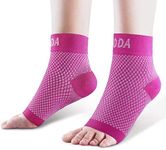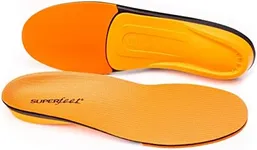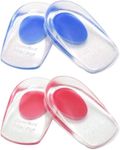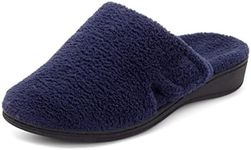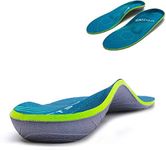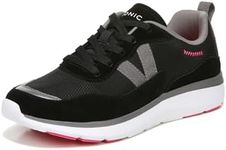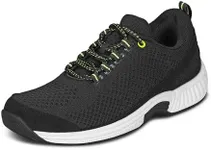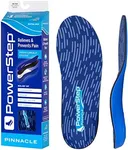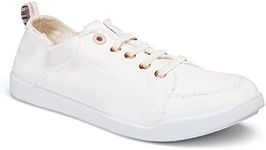Buying Guide for the Best Plantar Fasciitis Treatments
Plantar fasciitis is a common condition that causes pain in the heel and bottom of the foot. When choosing a treatment for plantar fasciitis, it's important to consider various factors that can help alleviate pain and promote healing. Treatments can range from footwear and insoles to physical therapy and medical interventions. Understanding the key specifications of each treatment option will help you make an informed decision that best suits your needs.FootwearFootwear plays a crucial role in managing plantar fasciitis. Proper shoes provide support, cushioning, and stability to reduce strain on the plantar fascia. Look for shoes with good arch support, a cushioned sole, and a firm heel counter. If you have high arches, choose shoes with extra cushioning. For flat feet, opt for shoes with strong arch support. Your daily activities and foot type should guide your choice.
Insoles and OrthoticsInsoles and orthotics are inserts placed inside your shoes to provide additional support and cushioning. They help distribute pressure more evenly across your feet and reduce stress on the plantar fascia. Insoles can be over-the-counter or custom-made. Over-the-counter insoles are suitable for mild cases, while custom orthotics are designed for more severe conditions or specific foot shapes. Consider your level of pain and foot structure when choosing insoles.
Stretching and Strengthening ExercisesStretching and strengthening exercises are essential for treating plantar fasciitis. These exercises help improve flexibility and strength in the foot and calf muscles, reducing strain on the plantar fascia. Common exercises include calf stretches, toe stretches, and foot strengthening routines. Consistency is key, so choose exercises that fit easily into your daily routine and address your specific pain points.
Physical TherapyPhysical therapy involves guided exercises and treatments administered by a professional to alleviate plantar fasciitis pain. Therapists can provide personalized exercise plans, manual therapy, and modalities like ultrasound or ice therapy. Physical therapy is beneficial for moderate to severe cases or when self-treatment is not effective. Your therapist will tailor the treatment to your specific needs and progress.
Night SplintsNight splints are devices worn while sleeping to keep the foot in a dorsiflexed position, stretching the plantar fascia and Achilles tendon. This helps reduce morning pain and stiffness. Night splints come in various designs, from rigid to soft, and should be chosen based on comfort and effectiveness. If you experience significant morning pain, a night splint might be a suitable option.
Medical InterventionsMedical interventions for plantar fasciitis include treatments like corticosteroid injections, shockwave therapy, and surgery. These options are typically considered when conservative treatments fail. Corticosteroid injections provide temporary relief by reducing inflammation. Shockwave therapy stimulates healing through sound waves. Surgery is a last resort and involves removing or releasing the plantar fascia. Consult with a healthcare professional to determine if medical interventions are necessary for your condition.
